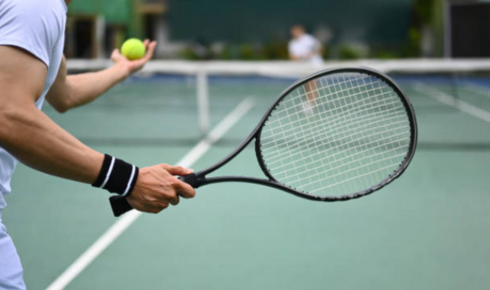Outdoor tennis courts in 2025 are no longer just flat slabs of concrete or traditional clay—they are high-performance, weather-resilient, athlete-friendly environments. At the core of this revolution lies Tennis sports flooring, which is now widely adopted as the standard for next-generation synthetic court systems.
With an increasing focus on sustainability, smart design, and low-maintenance sports infrastructure, synthetic flooring is being chosen over conventional surfaces across India and globally. Tennis academies, public sports parks, schools, and private sports facilities are upgrading to acrylic floor systems for their durability, UV resistance, and consistent performance. Let’s explore why this surface is shaping the future of tennis and why it should be the go-to choice for any outdoor floor court construction in 2025.
How Acrylic Flooring Meets the Demands of 2025 Players
Modern-day tennis players demand more than just bounce—they expect a surface that protects their joints, responds predictably, and stands the test of time. Acrylic floors deliver on all three.
Built using multiple layers of synthetic flooring materials, the system includes an acrylic resurfacer, textured acrylic floor paint, and protective acrylic floor finish. Cushion systems may also be included for added comfort. These layers together create a sport court with excellent ball response, slip resistance, and long-term playability—regardless of the weather.
The synthetic ground base—either concrete or asphalt—provides structural stability, while the acrylic layers enhance safety and performance. This makes it ideal for both training academies and tournament-level installations.
Climate Adaptability: A Critical Factor in Indian Tennis Infrastructure
India’s diverse climate poses a challenge for outdoor courts. Traditional materials like clay, grass, and bare concrete quickly break down under UV exposure, monsoonal rain, and fluctuating temperatures. However, acrylic flooring is engineered specifically to overcome these issues.
The surface is:
- UV-stable, preventing color fading and cracking.
- Water-resistant, ensuring quick drainage and faster drying post-rain.
- Thermally flexible, reducing the risk of surface expansion and cracking.
These weather-resistant qualities make synthetic court installations with acrylic finishes not only a smart investment but also a year-round solution for Indian sports centers.
Smart Upgrades: Customizable Court Paint and Branding
The rise of tennis court flooring as a commercial and community-driven sport has led to a growing demand for customized courts. Today’s facility owners want courts that reflect their brand or school colors, integrate sponsors, or offer unique aesthetics.
With acrylic floor paint, this is fully achievable. Available in a wide range of ITF-compliant and custom colors, court paint enables two-tone surfaces, vivid contrast for better visibility, and even integrated logos and text. Whether it’s a blue-green combo for a pro academy or red-grey for a residential club, customization is limitless.
The acrylic floor finish further seals the paint, protecting both function and design. This kind of visual branding is particularly important in 2025, where visual storytelling drives online and offline engagement.
Sustainability and Low-Maintenance Design
As sustainability becomes a non-negotiable in construction and urban planning, synthetic flooring made from acrylic is proving to be an eco-conscious choice. Acrylic systems are low-VOC, consume minimal water compared to clay courts, and last longer—reducing waste from resurfacing or frequent repairs.
Once installed, an acrylic sport court requires minimal upkeep:
- Occasional washing with water
- Visual checks for wear or damage
- Re-coating every 5–7 years (depending on usage)
This low-maintenance approach saves time, water, labor, and long-term operational costs, making it an ideal surface for municipal parks and schools operating under tight budgets.
Performance Engineering: Why Players Prefer Acrylic Floors
A floor court made from acrylic is not just a surface—it’s a performance tool. The multi-layered cushion system used in advanced setups is designed to absorb shock, reduce fatigue, and minimize joint strain. This makes it an ideal surface for high-impact games, especially for players training intensively.
Ball bounce is another critical metric. Acrylic provides a medium-fast pace, which is preferred by most players and certified by the ITF (International Tennis Federation). Unlike turf or tiles that may vary under different temperatures or moisture conditions, acrylic floors maintain consistent ball behavior across seasons.
The textured top surface also ensures optimal grip. This is crucial for executing sharp turns, sprints, and recoveries—core aspects of competitive tennis.
Comparison with Other Outdoor Tennis Surfaces
When comparing outdoor tennis surfaces, acrylic flooring consistently stands out as the superior choice. It provides a consistent, medium-fast ball bounce, which is ideal for competitive play, unlike clay courts, which offer a slower and often inconsistent bounce, or turf and PP tiles, where bounce can vary significantly.
Concrete and asphalt, while fast, tend to produce a harsh and unforgiving bounce that can impact player performance. In terms of weather resistance, acrylic courts excel with excellent durability against UV rays, rain, and temperature changes, while clay and concrete suffer in extreme conditions and turf offers only moderate protection. Maintenance is minimal with acrylic—requiring basic cleaning and occasional repainting—whereas clay courts demand constant upkeep, and turf or concrete surfaces need moderate attention. For player comfort, cushioned acrylic systems provide high impact absorption, reducing joint strain, whereas clay and concrete courts offer little to no comfort.
Additionally, customization is far more advanced with acrylic surfaces due to the wide availability of court paint options, allowing vibrant colors and branding. In contrast, clay, turf, and concrete offer limited or no customization features. Finally, in terms of lifespan, acrylic courts last between 7 to 10 years, significantly outlasting clay (3–5 years), turf (3–6 years), and concrete/asphalt (2–5 years), making acrylic flooring a smart, long-term investment for any outdoor synthetic court project.
Use Cases Across India in 2025
Several urban developments, sports academies, and smart townships are rapidly investing in acrylic flooring due to its adaptability and cost-effectiveness. Examples include:
- Smart City Projects integrating rooftop and compact-size tennis courts.
- Tennis Academies in Delhi, Pune, and Hyderabad choosing acrylic over clay to allow year-round training.
- Public Sports Parks upgrading concrete surfaces to acrylic for better safety and visual appeal.
The growing middle class, rising tennis interest, and state-level sports investments further fuel this trend.
Conclusion
As tennis continues to evolve in 2025, infrastructure must keep up. Acrylic flooring is more than just a trend—it’s a solution built for performance, longevity, and modern aesthetics. Whether it’s about ensuring player safety, delivering competitive-level bounce, or maintaining courts in India’s tough climate, synthetic court systems built with acrylic floor technology are unmatched.
From the flexible synthetic ground base to the high-quality acrylic floor paint and protective acrylic floor finish, every layer is designed for the future. For anyone planning an outdoor floor court—be it for training, tournaments, or community use—the clear choice is acrylic.

